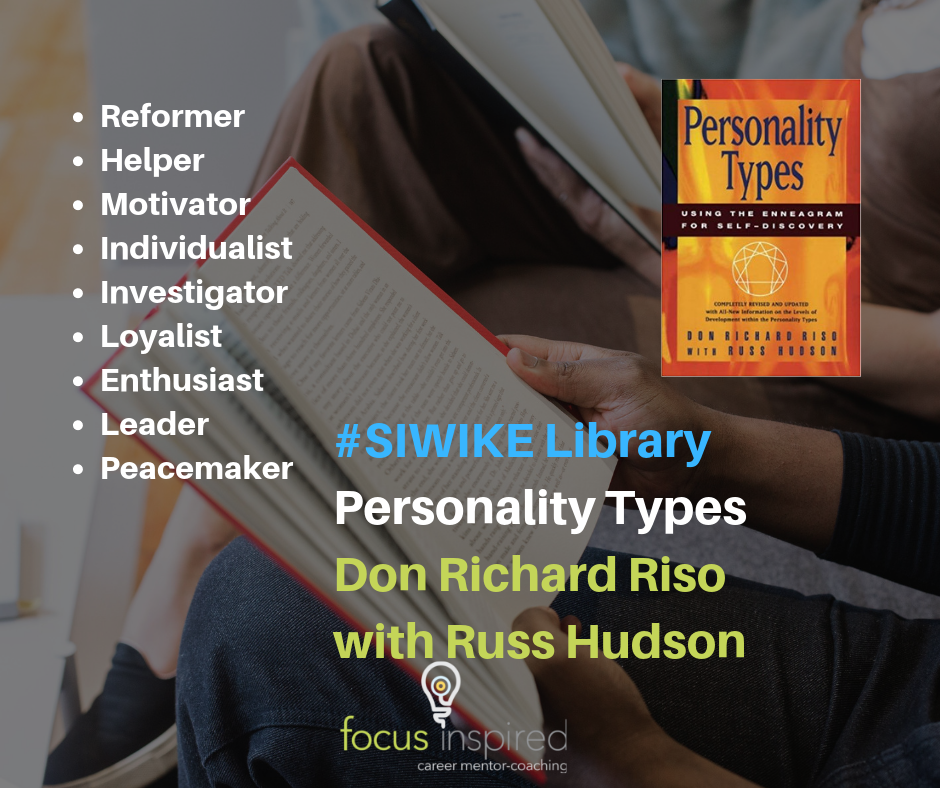
BOOK 2019: Personality Types – Using the Enneagram for self discovery: Don Richard Riso with Russ Hudson
Summary:
In the career world, MBTI (Myers-Briggs Type Indicator) seems to be the most widely know. There are also DISC, Big 5 OCEAN, StrengthsFinder and many others that are proving MBTI and each other to be less effective. The Enneagram seems to be the oldest ones that I’ve come across. There are 9 basic types (these are the ones from the book and vary based on the source):
- Reformer
- Helper
- Motivator
- Individualist
- Investigator
- Loyalist
- Enthusiast
- Leader
- Peacemaker
The theory is that we are all of them, and yet have a dominant type. For each type, there are 10 levels of development. As you move up the levels you are going towards integration (peace and fulfillment). As you move down, you are headed towards disintegration (behaviours that become self-destructive). There are also wings which allow you to take on qualities of adjacent types.
There is quite a complex interrelation between many of the types.
I can see the types of many people I know within these nine. Though when you start to add integration, disintegration, wings and all, then it becomes much more challenging.
Still, I find that having the types as a reference serves to enhance the vocabulary of being able to get to know yourself.
“Personality Types: Using the Enneagram for self-discovery” was read Jan 2019
Why I decided to read it
I have been on a kick to decode self-awareness and have been taking a look at the various models out there. Learning more about the Enneagram will help add to the tool kit.
My goal is to build a whole tool kit of these assessments and ideally to create a meta-model (a model of models) that can show how they all inter-relate. Hopefully in a simplified form. Though given how complex humans are, then that’s unlikely to happen.
All of these assessments are useful from one perspective, and inaccurate for others. For me, it’s just nice to learn how others are viewing the world, and themselves. Then seeing what I can take for my own self-reflection.
Who should read it
Those looking to be more self-aware.
Also, those that are looking to better understand others especially in their own relationships.
Memorable highlights for me
The 9 types, the development levels, directions of integration/disintegration, wings, basically all of the concepts. While a lot of it reads a bit like a horoscope, what I found useful was learning ways to differentiate behaviours.
This is a bit of a dense reference manual and was a bit challenging for me to get through.
Have you read it? What did you think?
Get it on Amazon: https://amzn.to/2TvYGta
Follow:Share:
